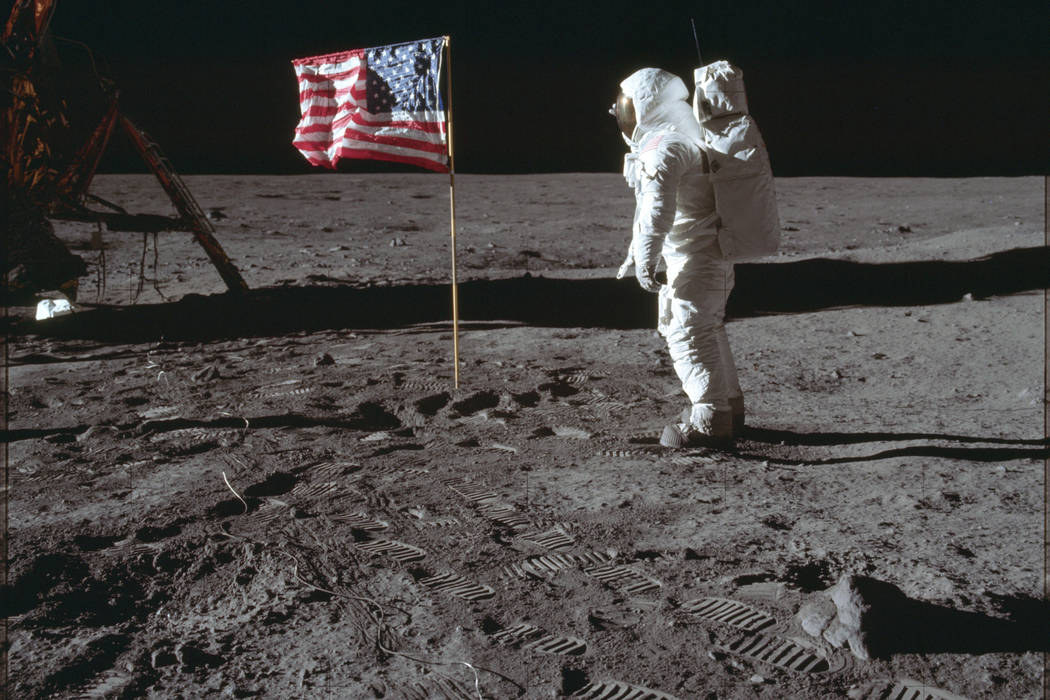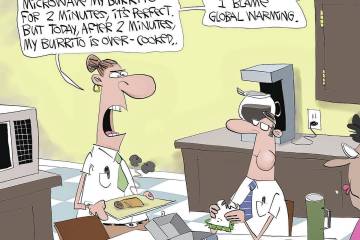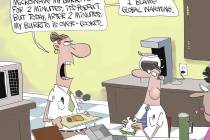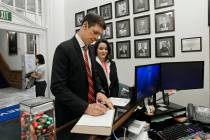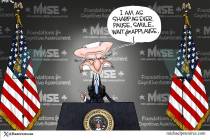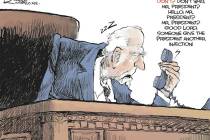EPSTEIN: Recollections on the moon walk
On July 20, 1969, in Boppard, Germany, I heard the news — der Adler ist gelandet. As Neil Armstrong reported, the Eagle had indeed landed on the moon, with one small step for man and one large leap for mankind. Here are two takeaways from this brief personal anecdote.
The first is that everyone who was alive and sentient that day remembers where he or she was, just as they did with the assassination of John F. Kennedy less than six years earlier. The second is the landing captivated not only just the denizens of Cape Kennedy (as Cape Canaveral was known between 1963 and 1973) or even just Americans. All eyes in that remote German village were focused on the same cosmic event. On the 50th anniversary of the occasion, let’s recall why the event was so important at the time and how in retrospect it looks today.
The moon landing was the culmination of the space race, which allowed the United States to make good on President Kennedy’s vow that the country would make it to the moon before the end of the 1960s. In hindsight, the event looks almost inevitable. But the early history was anything but.
The space race took shape in the 1950s, when the political climate was far darker than it is today. Recall that, at the outset of this period, the Soviets (as they then were called) had been able to successfully detonate an atomic bomb in 1949 and a hydrogen bomb in November 1955. They were aided in part by espionage efforts, including those by Julius and Ethel Rosenberg in the United States and the German physicist Klaus Fuchs who worked on the Manhattan project.
Just after Soviet tanks rumbled into Budapest in October 1956, I watched that November the initial episode of the CBS series “Air Power” with Walter Cronkite, which featured a hypothetical account of “The Day North America Is Attacked,” ending with one Soviet bomber breaking through U.S. arctic defenses and dropping a nuclear weapon on some unnamed major American city.
Needless to say in this Cold War environment, experimentations with rocket launches were commonplace. Indeed, people in the United States thought it held the lead only to read on October 4, 1957, the banner headlines that reported the Soviets had launched Sputnik, a 184-pound satellite into orbit. Now, the United States looked to be on the wrong side of a missile gap with the Soviet Union. In the ensuing “space race,” landing on the moon was, perhaps, the key milestone. The interest in the moon landing was woven into the fabric of an ongoing political and military conflict that it is easy to lose sight of 30 years after the fall of the Soviet Union.
But geopolitics was only part of the story. The science and adventure also mattered.
Think back, for the moment, to the race in which the Norwegian Roald Amundsen beat the Britain Robert Falcon Scott to the South Pole in 1911-1912. Both explorers knew they were pushing the envelope. Amundsen did everything right; Scott did much wrong. The former returned a hero; and the latter died of exhaustion and cold in a tent long after Amundsen had made it back to safety. Yet within a decade, advances in technology had taken the drama out of any future polar exploration — it all became too easy to be epic.
The moon landing had that same high level of risk as the early polar struggles. Astronauts Virgil Grissom, Ed White and Roger Chaffee were asphyxiated on the ground in January 1967 when a fire broke out in their command module during tests for the Apollo 1 mission. Any space launch would be a lot more dangerous. Indeed, on mission after mission, everyone had bated breath during the re-entry period when radio contact was broken.
By modern standards, the gear, computers and communications systems were primitive. But by historical standards, they were groundbreaking. The youth and energy of the engineers and scientists at NASA evidenced a full-scale, double-time heroic effort. Risk, innovation and improvisation came together in uncertain proportions. Indeed, less than one year after the successful return of Apollo 11, Apollo 13 was launched in April 1970 only to abort its lunar landing when an oxygen tank exploded on board. Only a set of daring maneuvers with the lunar module brought the crew safely home.
Here, again, context matters. The lunar adventures of the 1960s stood in stark contrast to the increased discontent in the United States brought about by the intersection of the civil rights movement with the Vietnam War. The disastrous Parrot Beak’s invasion to root out the Viet Cong from Cambodia was launched less than two weeks after the return of Apollo 13, and the Kent State shooting of unarmed students took place only a few days later. A very different mood. And so too did the novelty of the Apollo program, which launched its last flight in December 1972 and shut down three years later — mission accomplished.
So today, 50 years after the moon landing, national competition still exists to see whether China or India will make it back to the moon. But this race will be only a pale imitation that lacks the excitement of the real deal. The event will be duly recorded on the websites and the inside pages of daily newspapers.
But the real attention will shift rightly to the first-generation controversies of our time. We may wonder about Elon Musk’s latest foray, or how nanotechnology offers miraculous cures for obscure diseases.
But let’s not kid ourselves. No matter how beneficial or entertaining these one-day wonders, they do not focus on a single set of events with heroes and goats that defined a generation.
Certain events are not replicable. History is not just about progress. It is also about theater, and try as we may, I doubt that we shall ever recreate the heady exaltation that greeted the lunar landing some 50 years ago.
— Richard A. Epstein is a professor at the New York University School of Law, a senior fellow at the Hoover Institution and a distinguished service professor of law emeritus and senior lecturer at the University of Chicago. His Review-Journal column appears monthly.



